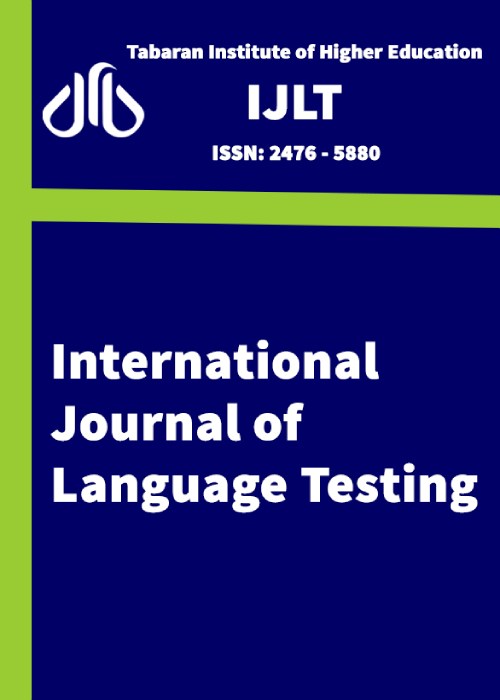فهرست مطالب
International Journal of Language Testing
Volume:10 Issue: 1, Mar 2020
- تاریخ انتشار: 1399/07/19
- تعداد عناوین: 2
-
Pages 1-10
Test validity can be jeopardized to the extent that test scores are contaminated by factors other than those intended by the test. Many method specific factors and examinees’ personal characteristics can influence test performance. In this study the contribution of four construct-irrelevant factors, namely, exam anxiety, reading anxiety, ambiguity tolerance, and attitudes towards reading to reading comprehension test performance was examined. Correlation and multiple regression analysis showed that reading anxiety and attitudes toward reading significantly contribute to reading test performance while exam anxiety and ambiguity tolerance do not. This finding shows that examinees’ reading anxiety and attitudes toward reading can invalidate the reading comprehension test scores to a certain degree. Implications and limitations of the findings are discussed and some recommendations for test administrators and teachers are provided.
Keywords: Validity, reading comprehension test, Exam Anxiety, Reading Anxiety, Ambiguity Tolerance, attitudes toward reading -
Pages 11-32
Cognitive Diagnostic Models are a class of multidimensional categorical latent trait models which provide diagnostic information by reporting examinees' mastery profiles on a set of predefined skills. CDMs provide fine grained information concerning examinees' strengths and weaknesses in the subskills and subprocesses which constitute a larger domain of knowledge. Such detailed information helps in classroom teaching, designing remedial courses, and material development. In this study, we analysed a high stakes English as a foreign language reading comprehension test using GDINA model. The skill profiles of the test takers, the class probabilities, attribute mastery probabilities, attribute difficulties, and model data fit at test and item level were examined. Implications of the study for reading comprehension research and CDM applications are discussed.
Keywords: Cognitive Diagnostic Model, reading comprehension test, National University Entrance Examination


